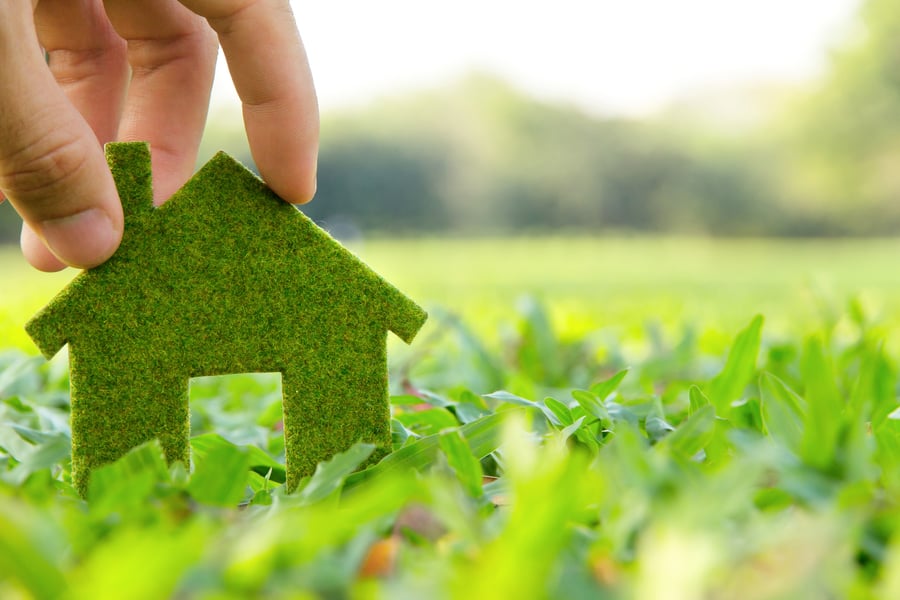Climate change is one of the most hotly spoken about topics in recent years, and for good reason.

Craig McKinlay is new business director at Kensington Mortgages
Climate change is one of the most hotly spoken about topics in recent years, and for good reason.
However, the housing market in particular has come under fire, considering that homes are responsible for one-quarter of UK carbon emissions.
We all must do our bit and make changes before it’s too late.
Last year, the UK committed to net zero emissions by 2050. To get there, the government introduced a £5m fund to help the financial services sector develop green home products.
Also, towards the end of last year, housing secretary, Robert Jenrick, unveiled a new green standard to bring an environmental revolution to home building.
Most initiatives focus on new builds. For example, Legal & General’s Modular Housing was the first of its kind to start a factory-like production of new builds and Barclays’ green mortgage gives buyers access to lower interest rates when buying new-build energy-efficient homes.
Also, Nationwide earlier this month said it would give borrowers loans of up to £25,000 for green home improvements and also offer preferential interest rates to borrowers who buy new-build properties with an EPC rating of “A”.
However, whilst it’s important that new builds are energy efficient, we, as an industry, need to put greater emphasis on improving the UK’s existing housing stock, particularly the oldest properties.
Research by Citizens Advice and the Energy Savings Trust has revealed that over a third (36%) of British households haven’t made any changes to the way they use energy in recent years – the equivalent of 9.7 million.
Furthermore, almost three-quarters (73%) of people were surprised to hear the extent British homes contribute to global warming.
To us, it’s clear that there is an opportunity for the mortgage industry, lenders and brokers alike to do more to encourage and help people save money and reduce their household emissions.
For example, we’ve recently launched a new Eko Cashback mortgage to help reward your clients. Whether your client is buying an older home, or simply re-mortgaging on an existing property, customers will be given £1,000 cashback if they can improve their home’s Standard Assessment Procedure (SAP) by 10 points within 12 months after the mortgage completion date.
Once the improvements are made, customers will need to arrange for a new Energy Performance Assessment (EPA) to be carried out by a registered EPA assessor, and once verified £1,000 will be paid straight into their bank account. The product also comes with free valuations and free legals.
Whether they decide to install a hot water cylinder, or low energy lighting, the below table highlights the types of improvements that customers could make to enhance their home’s energy efficiency.
| Energy Efficiency Improvement | Points | |
| 1 | Swap to a condensing boiler | 47 |
| 2 | Install double glazing (UPVC) | 4 |
| 3 | Upgrading roof insulation | 13 |
| 4 | Low energy lighting | 2 |
| 5 | Insulating hot water cylinder | 8 |
| 6 | Loft insulation | 10 |
| 7 | Cavity wall insulation | 13 |
| 8 | Internal / external insulation of solid walls | 20 |
| 9 | Solar panels | 10 |
Most existing green schemes reward those who already have a good EPC rating rather than addressing pre-existing issues from older properties. Going back to Nationwide’s offering, this is very much a discounted rate on a home improvement loan rather than a reward for doing the work, like our cashback offer. In effect, we’re saying thank you for some of the improvements they make.
With over 17 million homes with an EPC rating below Band C, the industry needs to encourage homeowners to make little changes and offer incentives to help get us to where we all need to be.
Climate change is happening. And at a very worrying rate.
Ultimately, as an industry, we all need to pull together and help the extra-ordinary person make their difference.



